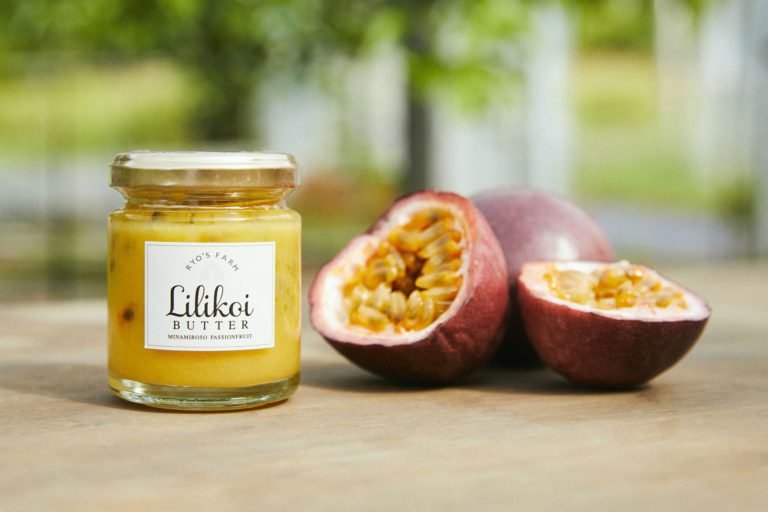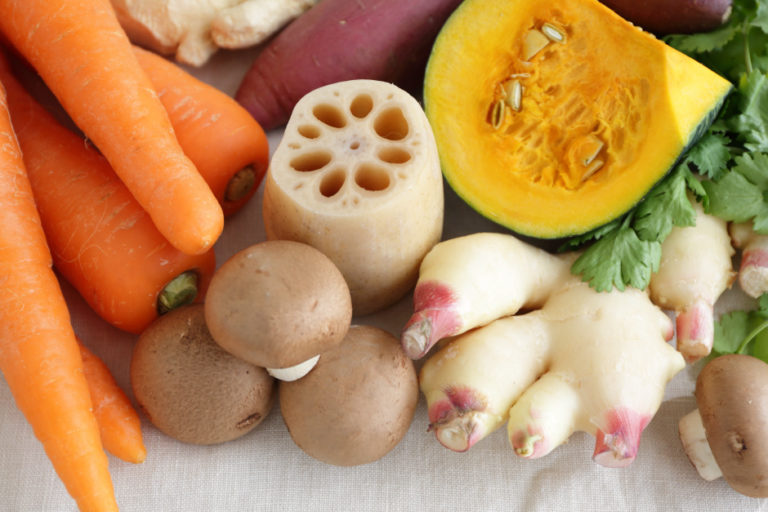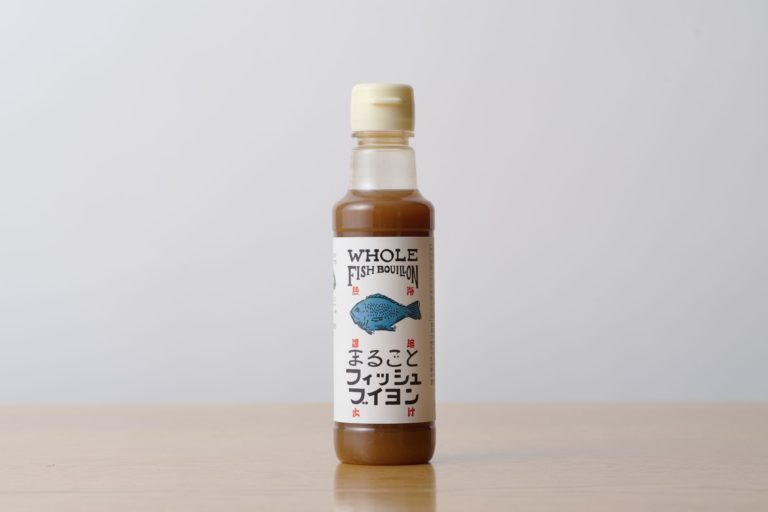Amakusa Farms Teruaki Babas Seasonal Vegetables
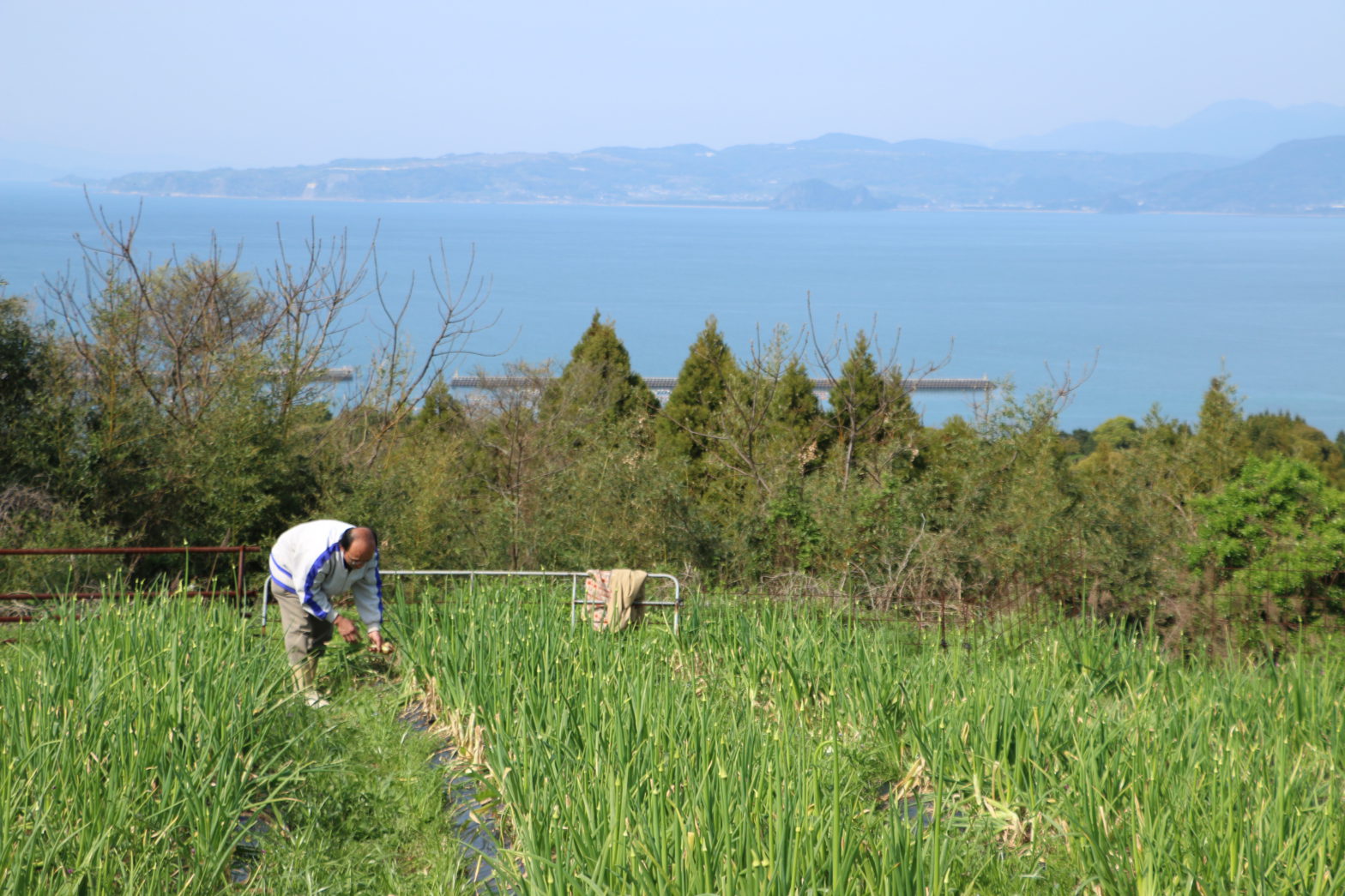
Mr. Baba was engaged in the livestock industry and vegetable production in parallel,
During the time when ethanol was gaining momentum and crude oil prices were on the rise, he began to question Japan's reliance on imported livestock feed.
During this time, 7 years ago, he began his venture in naturally cultivating vegetables.
Beginnings In Natural Cultivation
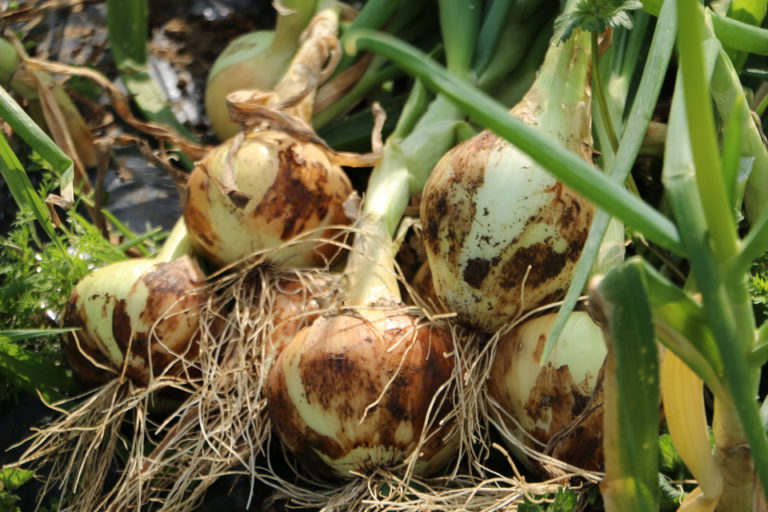
The spark that started Mr. Baba on his path was a potato he had grown, which was infected over 90% of its mass with the “potato scab” disease.
Mr. Baba had two choices, change the field, or soil washing. He knew there had to be another way. That is when he met a mycologist, someone who studies fungi, who gave him the inspiration he needed to switch to organic cultivation. However, organic cultivation often results in poor taste. He realized that was the result of over-nourishing the field. During one summer of trial and error, he tried feeding the field only with dried grass. The onion he grew there was exponentially more delicious than before. This was the key to Mr. Baba beginning his experimentation with natural cultivation.
Baba’s natural cultivation style is very simple.
“Don’t bring extra things into the field. We will return all the native grass, not to mention the vegetables we grow here, to the soil.”
Fertilizer is something man-made, and contains chemicals like nitrogen and potassium phosphate. The idea of putting these things into the soil comes from man’s desire for larger crops and a more abundant harvest. However, that idea breaks the balance of the soil and affects the produce.
“Natural cultivation isn’t difficult. Farming is an old profession, and they never used fertilizers back then. The difficulty comes from pumping these fertilizers and other things into the soil which wrecks a delicate balance.”
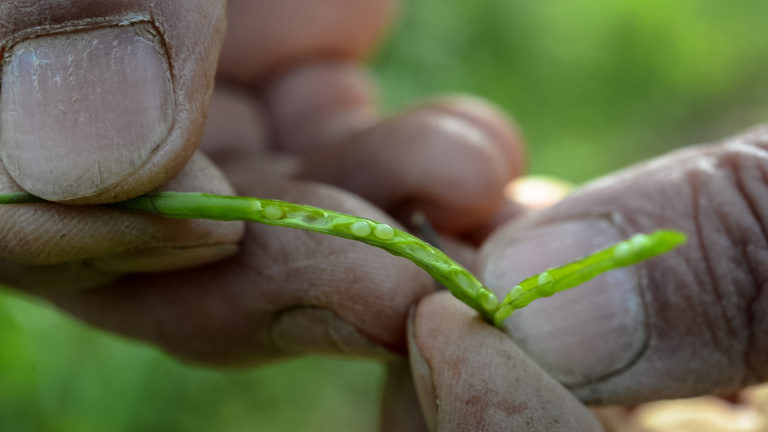
Mr. Baba has two things to which he adheres to; one is minerals and the other is the fungus and microbes that inhabit the land.
“The balance of Earth’s sea water, and the amniotic fluids of a human being have a balance that does not change, and we are building that balance inside of the land. It takes a long time through natural means, but through reaping and drying the grass, you create a winter-like state and it quickens the cycle.”
In other words, the job is to get the best balance in the soil in nature. Simple but not easy. It goes without saying that the character of each field and the location where it is located will change steadily, and many factors such as the weather of the year will have an effect. However, Mr. Baba believes that plants create and grow their own energy through photosynthesis, and emphasize the creation of an environment within that.
The merits of natural cultivation are not limited to safety and taste, but there are economic merits to it as well.
“No need for fertilizers, pesticides, or the costs that come with applying them to the field. You’ll end up with a larger profit margin.”
Of course, increasing productivity is important but, placing little emphasis on that, there is the added benefit of lower cost of production.
Boosting Amakusa's Natural Environment
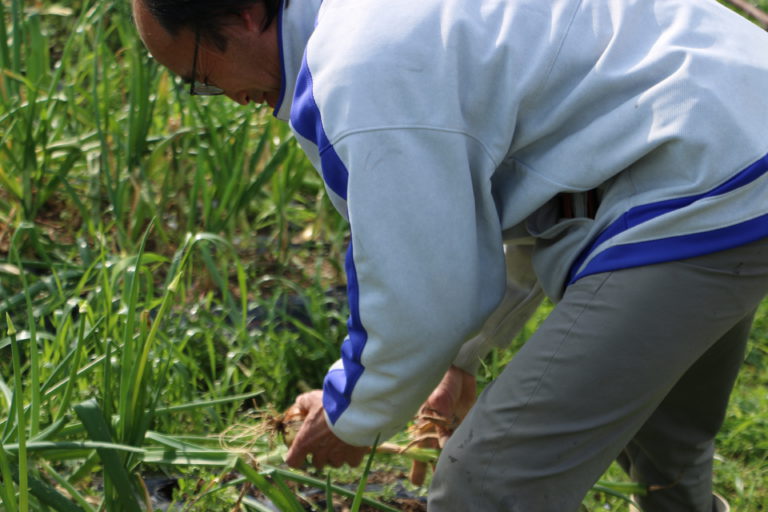
Of course, the natural environment peculiar to Amakusa supports natural cultivation.
“The salty sea breeze flows in from the coast and enriches the soil with its minerals.”
It shows in the taste. The mikan oranges harvested from the slopes facing the coast in Reihoku in the northern part of Amakusa, and Ushibuka in the south, are absolutely incredible. That’s because the air that comes in to Reihoku from rough winter seas in the north, and likewise during the summer in Ushibuka in the south, injects minerals directly into the land and improves the quality of the soil.
The Amakusa islands are blessed with a perfect balance of land and sea that creates delicious, naturally cultivated vegetables.
Onions Are In Season!

Mr. Baba’s spring onion field is approaching harvest time. The naturally grown onions, with the help of Amakusa’s soil, sun and sea, have started to grow to full maturation and are awaiting distribution.
Currently, Mr. Baba grows over 30 different types of vegetables per year. His particular favorites are Amakusa Okra in July and Kasuga Squash, a native species to Kumamoto, in June to July. “They’re really delicious. I highly recommend you try them.”
Mr. Baba’s fields are neither flat nor large. An amateur certainly would not call his farm “blessed”. His farm consists of slopes, long fields, and abandoned cultivated land, but that is where Mr. Baba found the perfect place to cultivate the onions that await the harvest.
“I don’t have much self-confidence. Of course the basics are there, but it doesn’t mean I don’t crumble. I recognize the difference between good and bad items. What is right today won’t be right tomorrow. I don’t think everyone, even in Amakusa Hagukumi, should believe 100% of everything I say. I want everyone to think for themselves. My methods are open to the public, and I encourage people to give it a shot.”
Amakusa And Figs
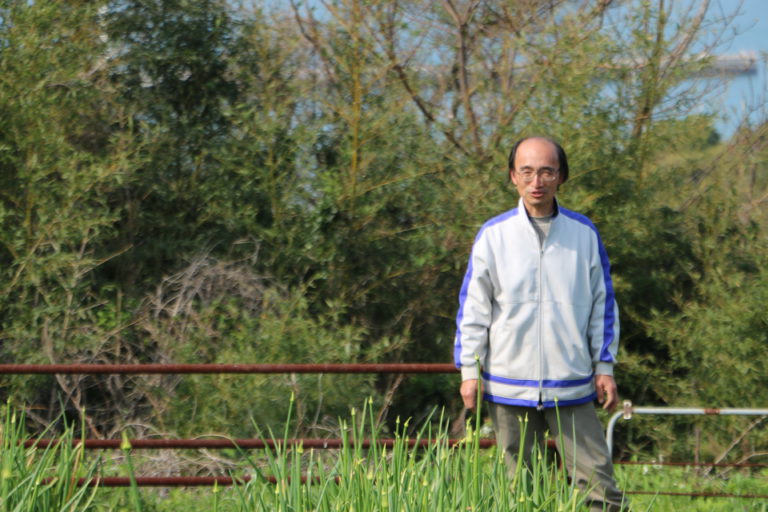
Figs grow naturally along the roads of the Amakusa coast.
They came to Japan along with Christianity and were raised first in Amakusa, according to recent studies supported by actual letters from missionaries visiting Japan.
“Inspired by the history of Amakusa, I have increased my production of figs,”
as the enthusiastic Mr. Baba tells us.


